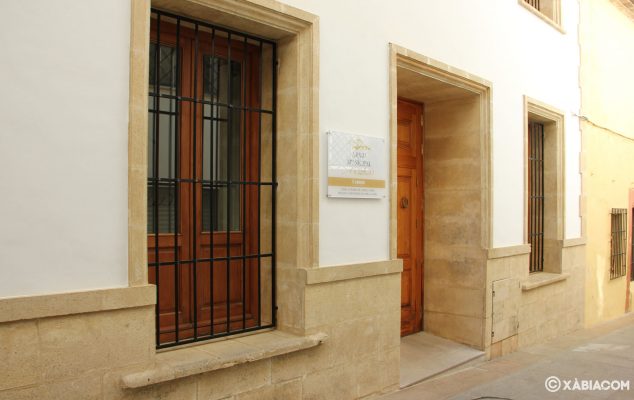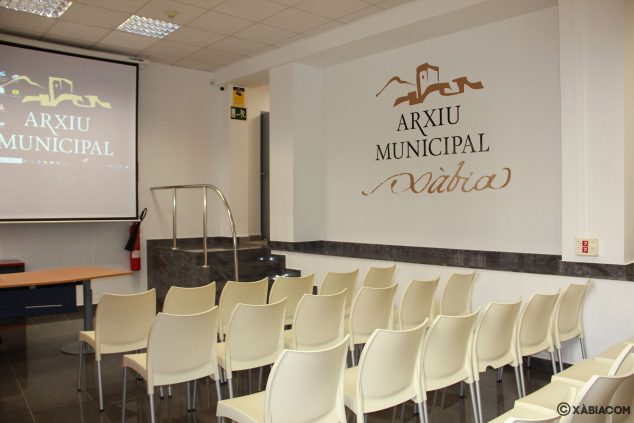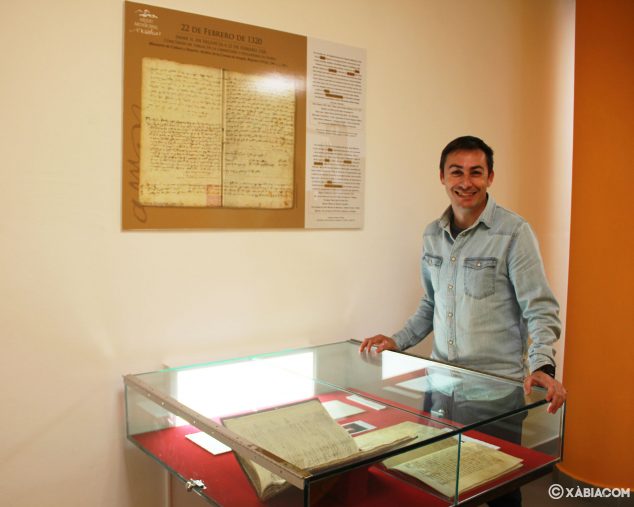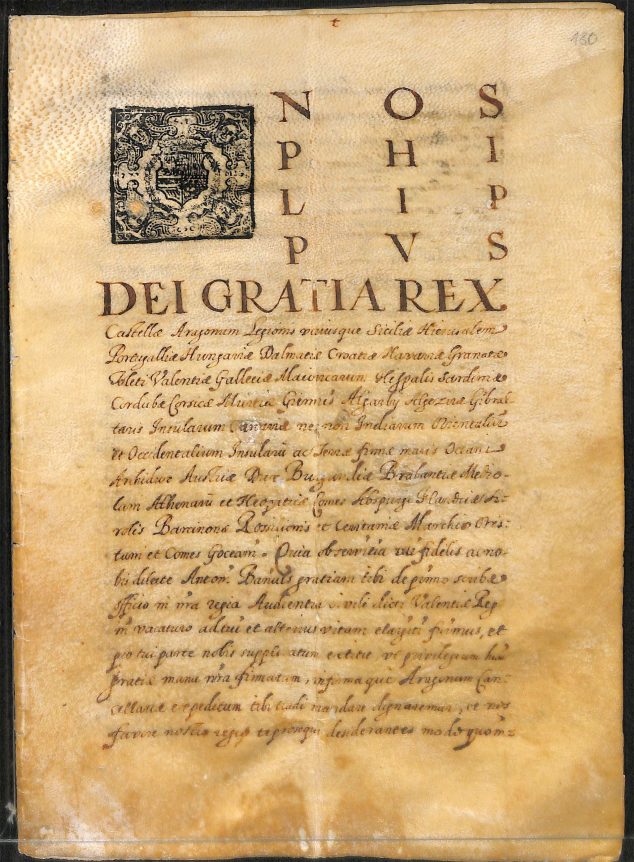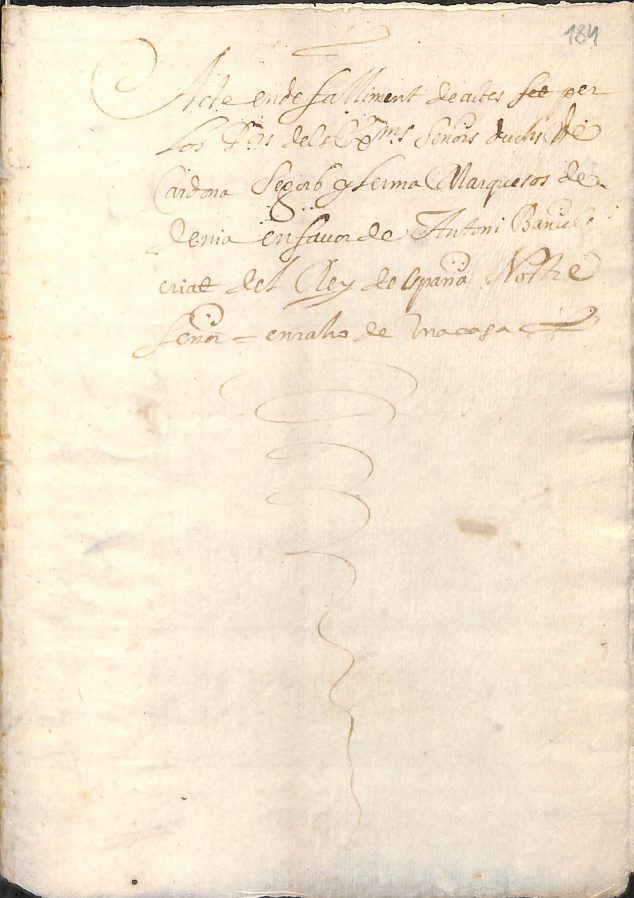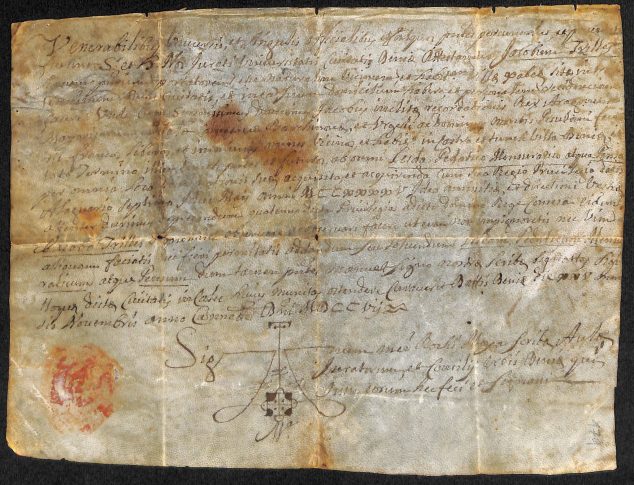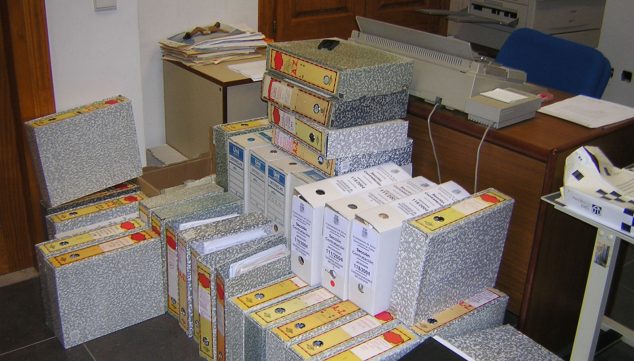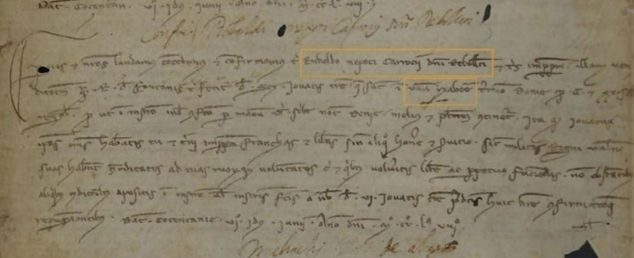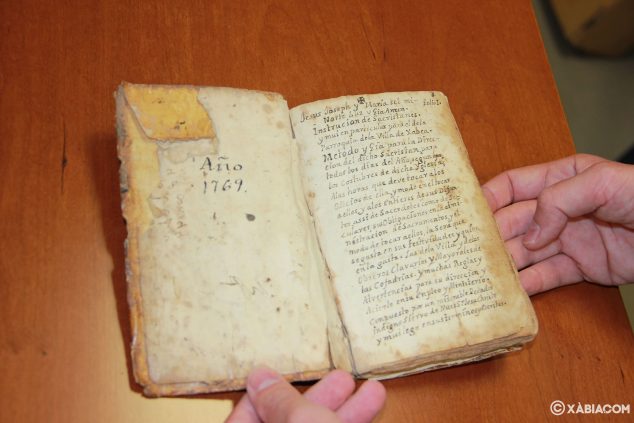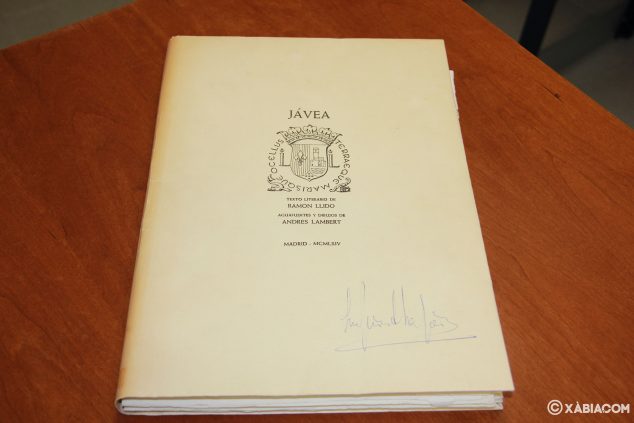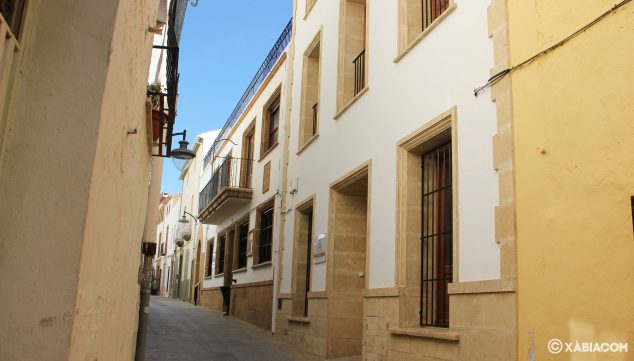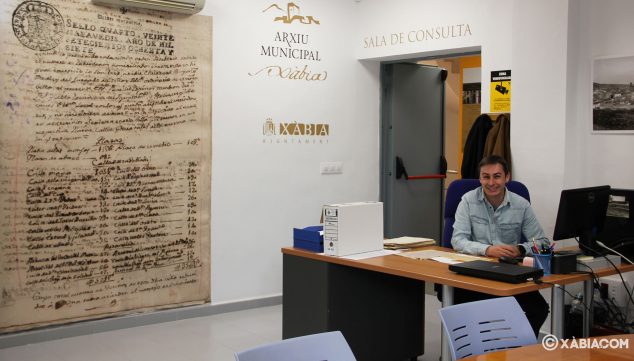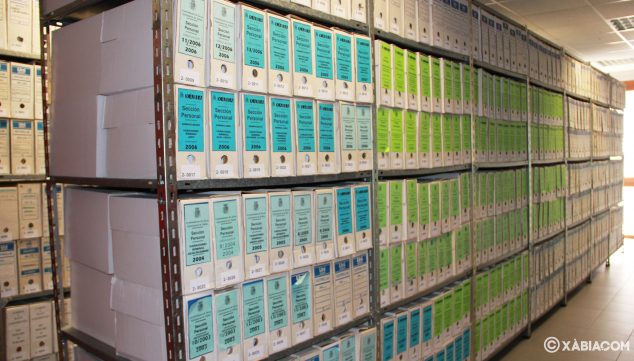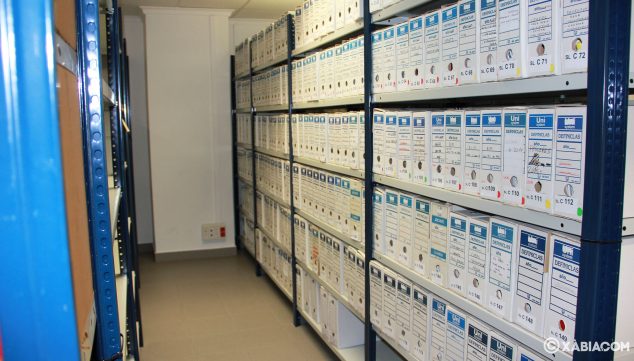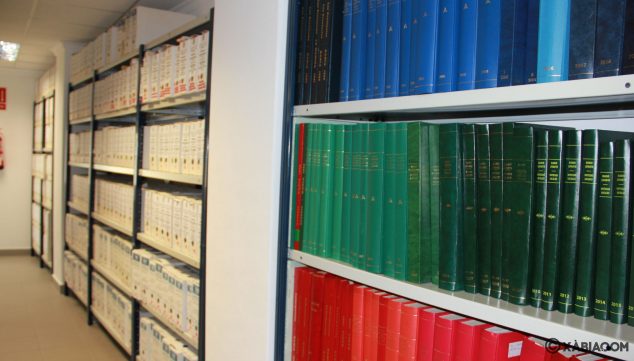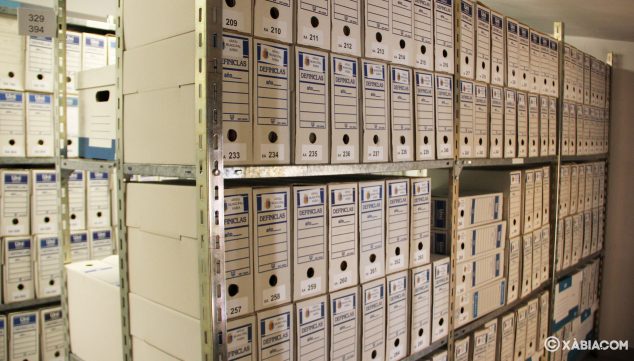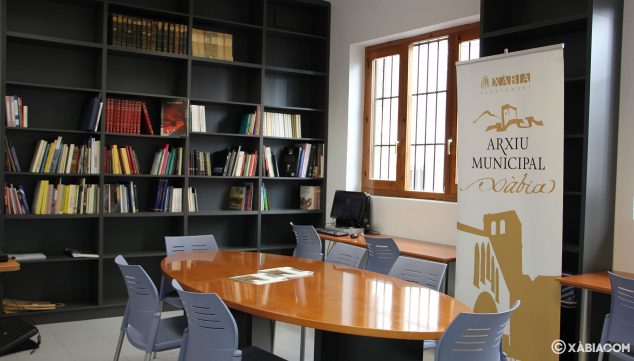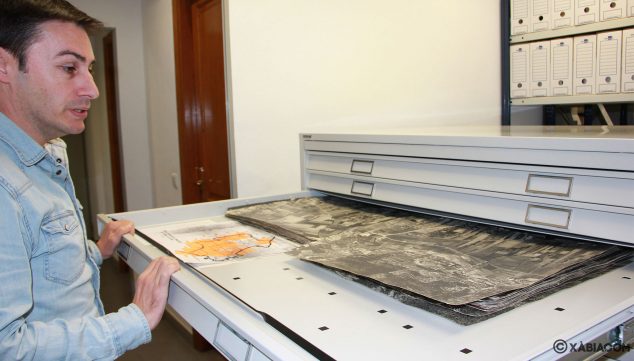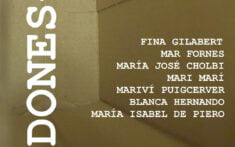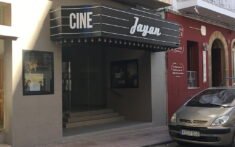| carrer d'Avall, 39 See map | |
| 96 650 88 27 | |
| Monday through Friday from 11: 00 13 to: 00 hours | |
| arxiuxabia.blogspot.com | |
| arxiu@ajxabia.org |
The Municipal Archive of Jávea is the place where all the documents produced in the Town hall, and where the historical documents that build local history are also preserved. It's relatively new, having opened in October 2018. Until then, it had moved from location to location.
Next you have an index with all the points that we are going to deal with.
- 1.
- 2.
- 3.
- 3.1.
- 4.
- 4.1.
- 5.
- 5.1.
- 5.2.
- 5.3.
- 6.
Facilities
The building has been dedicated solely to archives since very recently, since it was previously shared with other entities.
It has several heights: semi-basement, ground floor, first and second floor, with seven document deposits, consultation room and multipurpose room.
Today, all the documentation prior to the year 2000 (except for some frequent reference documents), is in the Municipal Archives building. The post-2000 documentation is in a warehouse in the Portal del Clot building.
What is it for
The archive is closely linked to the economic area, urban planning and social services of the townhall. It gathers the documentation that these areas produce, preserves it and provides it when needed. At present, of all the documentation, 85% are administrative files, documents created with an administrative function that with the passage of time become historical.
The documents are electronic, and those on paper are digitized, sorted and kept in the best conditions: all documents are located and kept in warehouses. Those who are not in good condition go through a restoration process (performed by an external company). The contribution of documents from the residents of Xàbia itself increases the quality of the archive: citizens lend documents and photographs to make a digital copy and become the patrimony of all.
Operation
At the moment the consultations must be in person. But it is expected that documentation and photographs can be obtained in the short term online.
The archivist's figure
The archivist is responsible for preserving the documentation and providing it when necessary for administrative work or for research work: usually those who request documents are internal people (City Hall staff) and external people (researchers, amateur researchers, students and citizens in general ). The municipal archivist is Juanjo Mas Cruañes.
History
In 1886, Roc Chabás wrote in the magazine The file: "In this town many interesting documents have been lost by those who had to keep them." This phrase summarizes the convulsive history of the Arxiu Municipal de Xàbia.
It opened in October 2018, ending 82 years of absence of file as such. But his career has been full of looting and wars. In these events, almost all documentation was lost and, consequently, history. One of the most serious was in the summer of 1936, when much of the documents and images were burned. Juanjo Mas explains that "They entered the City Hall, loaded the documents in several cars and burned them in the river." But a neighbor of Xàbia, José Segarra Llamas, approached the river and managed to recover the Volume III of the Municipal Archive, which contains documentation from the XNUMXth and XNUMXth centuries, among other documents, the Proceedings of the Consell de Justícia i de Bon Govern from 1787 to 1799. He too royal office for which vacant scribe of Valencia is granted to Antoni Bañuls, from 1649:
And in the same way, the act of delivery of said writing in 1650:
And the certificate in parchment of Jaime Trilles, of 1707.
The nephew of José Segarra Llamas, Josep Segarra Marí, donated to the city hall this Tom III of l'Arxiu Municipal, and that is why today we can enjoy these historical documents.
Different locations
The Municipal Archive of Jávea has suffered the lack of professionalization of its facilities, as this photograph of 2004 shows:
Until 2018, the documents went through several municipal buildings:
- From 1939 to 1981 they were on the last floor of the town hall.
- In 1981 at Carrer d'Avall and at Casa Falange.
- In 1982, where the tourist office.
In 1988 they entrust the management of the archive to the librarian Catherine Cardona, who was in charge for 30 years. In 1998 the building of the archive is built on Carrer d'Avall, but it is necessary to wait until 2018 for the entire building to be allocated to the archive, so that it is opened to the public and for the archivist to be incorporated.
Funds
As of October 2019, the Municipal Archive of Jávea had 20.766 boxes of documents and about 8000 record books (such as standards, accounting or personnel) distributed in its seven warehouses. The archive has 132.556 digitalized photographic archives (in February 2020), both for parties and events and events (snowfall ...). As we have said, its main source is the administrative documents generated by the City Council itself, which over time become historical.
Curiosities and historical documents that are preserved
One of the first actions carried out after the inauguration of the new and definitive municipal archive was the search for important documents for Xàbia in other archives. In the Archive of the Crown of Aragon, in Barcelona, it was found the first document that is recorded where the name of Xàbia appears, yxabee, belonging to the purchase of land. Data from June 8 1258, and Jaume I, in Cocentaina, confirms the purchase made by Ribaldo, a nephew of Carroz, in the Xàbia valley for 120 salaries. The document is in Latin. In the photo, the term Yxabee is marked:
In other subsequent documents also extracted from the Archive of the Crown of Aragon, the evolution of yxabee: in a document of 1301 it is mentioned as Examine, and in another of 1304 the place name is already xabea and from there you always see this name when referring to the town of Jávea.
June 5 1766Xàbia was visited by Baltasar Venero de Valera (senior accountant of the Duke of Medinaceli and Marqués de Dénia) to make an inspection of the chapter room and the archive. At those moments, the file was a large closet guarded with three keys, one held by the mayor, another from the first alderman and another from the notary There were stored the privileges, books and papers of the villa. It also had inventory of documents.
A document of 1787 yields data on the population: The number of inhabitants was 865 neighbors throughout the town, the main street being the most populated with more than 100 neighbors.
El sacristan diary, 1769, describes the masses and all the events that happened in the church:
Much more current, a Engraver lithograph book André Lambert year 1964, and of which only 300 copies were published.
Soccer photographs from the time of Mauricio Cheutin, Vanguard, Mosquitos and Olímpic are also preserved.
Other funds
In addition to administrative and historical documentation, the municipal and sports fund, the archive has funds incorporated:
- Mauricio Cheutín (≈ 1960 1986)
- Court (1879 ≈ 1962)
- Phalange (1936-1976)
- National Trade Union Center (CNS) (1936 ≈ 1974)
- Jesús Nazareno Agricultural Cooperative (1919-1984)
- Credit Cooperative (1924 ≈ 1984)
- Agricultural Cooperative Consum (1954-1983)
- Cooperative of Educational and Educational Services (SURCO) (1956-1966)
- Conference of San Vicente de Paula (1942-1947)
- Tourist Initiatives Center
- Steam JJ Sister (1910-1917)
- Commerce House of Jábea (1899-1924)
- Posts (1939-1954)
- Fàbrica d'olis d'orujo and alcohol (Llíria)
- Agrarian Chamber
Digital file
On the other hand, in 2021, the Municipal Archives of Xàbia opened the blog 'Els Papers de l'Arxiu' in which a series of articles with historical content were digitized to facilitate their access through the internet to all people interested in local culture.

